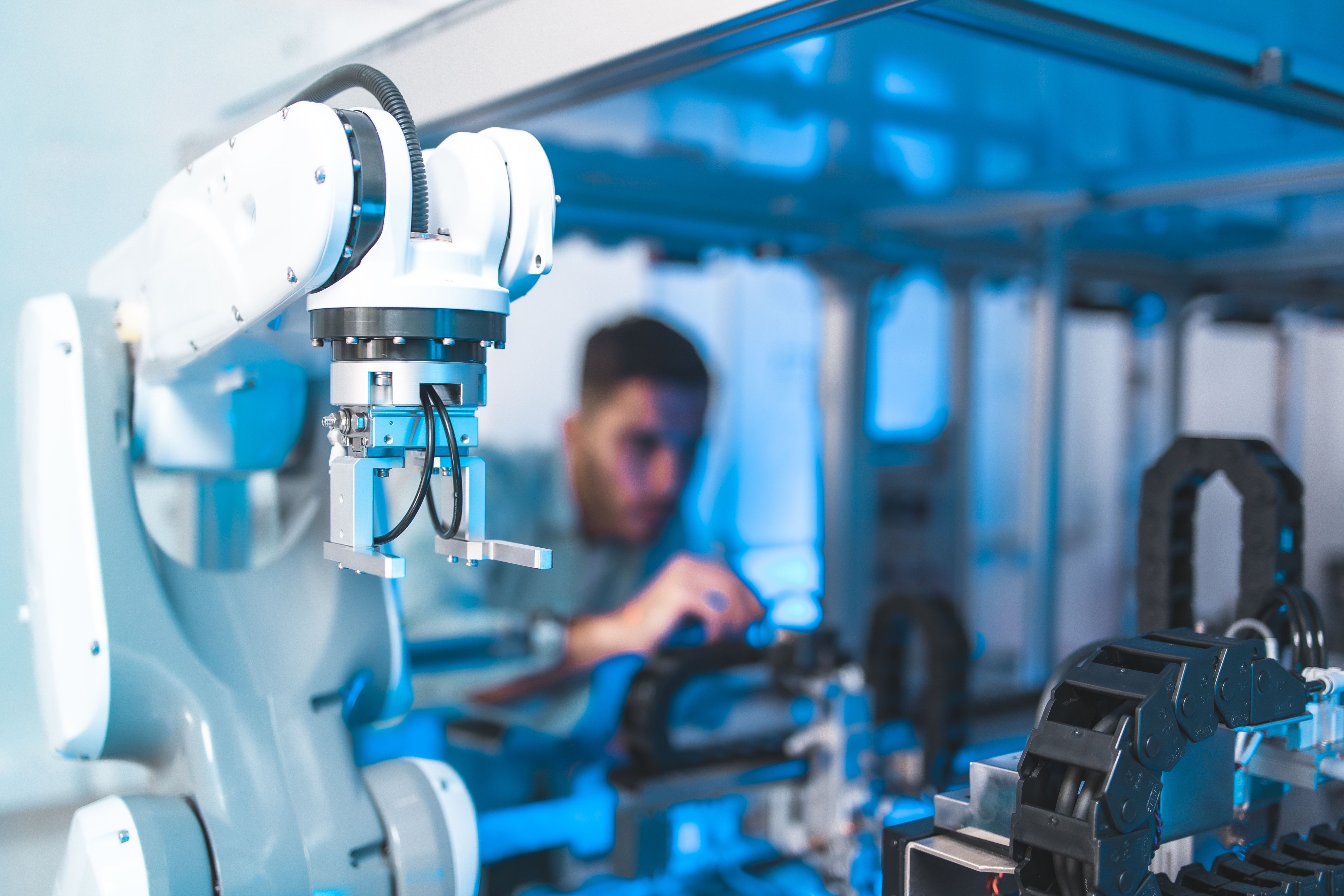Using Robotic Automation to Enhance Standardization and Traceability in Clinical Diagnostics
At ASMS 2023, Tabitha Hambidge of LGC presented a novel method for automating the certification of reference materials with the help of double exact matching isotope dilution mass spectrometry (DEM-IDMS).
Researchers from the National Measurement Laboratory (NML) at LGC, along with collaborators from the University of Surrey and Element Materials Technology, have pioneered a novel approach to improve the certification process of reference materials in clinical diagnostics (1). Their work, presented by LGC’s Tabitha Hambidge at the 2023 edition of the American Society for Mass Spectrometry annual conference, explores the use of liquid handling robots with integrated balances to automate the certification of multiple measurands, enabling faster production and increased accuracy.
Male Engineers Maintenance Robot Arm at Lab. he are in a High Tech Research Laboratory with Modern Equipment. Technology and Innovation Concept.Professional. | Image Credit: © anon - stock.adobe.com

Certified reference materials (CRMs) are crucial for standardizing clinical diagnostics, ensuring accuracy and comparability of test results, as required by ISO 15189. However, the conventional process of certifying CRMs can be time-consuming, taking several months to complete and typically focusing on only a few measurands. To overcome these limitations, the team sought to develop a more efficient and comprehensive approach that could traceably measure multiple measurands with high accuracy and low uncertainty.
The researchers employed the technique of double exact matching isotope dilution mass spectrometry (DEM-IDMS) to certify measurands traceable to the International System of Units (SI). They previously developed a higher order reference method for certifying phenylalanine and leucine manually. Building on this, they successfully translated the method onto liquid handling robots with integrated balances.
IDMS involves the addition of a known amount of isotopically labeled internal standard to the sample, followed by measurement using mass spectrometry. The isotopically labeled standard is chemically identical to the analyte of interest but contains a different isotope, allowing for accurate quantification. By comparing the ratio of the analyte to the internal standard, the concentration of the analyte in the sample can be determined with high accuracy and traceability.
With the automated system in place, the researchers conducted trials for the gravimetric preparation of a multiple analyte CRM. However, they encountered unexpected variability in the robots' ability to create gravimetric standards. Through meticulous optimization of liquid handling settings, such as draw speed, dispense speed, washes, and air gaps, the team addressed the variability and continued their experiments.
One significant difference between analyst preparation and robot preparation was identified: the use of a pipette versus a syringe piercing a closed vessel with a septum. Further investigations revealed that solvent droplets depositing on the septum during syringe removal contributed to weight without being incorporated into the solution, affecting concentration. To overcome this issue, the researchers explored methods to optimize settings, address contamination considerations, and clean metal syringes. Additionally, they considered the use of disposable pipette tips as an alternative, although initial trials encountered dripping issues.
Once the methods on both robotic systems are fully optimized, the researchers plan to compare the amino acid mixture prepared by the robots to the NIST amino acid CRM 2389a. By applying the precise DEM-IDMS workflow, they will evaluate the accuracy, precision, and measurement uncertainty of the robotic technique.
This novel approach demonstrates the potential of robotic automation as a powerful tool for certifying multi-analyte reference materials, ensuring traceability to the SI. The advancements made by the research team have the potential to significantly enhance standardization and quality assurance in clinical diagnostics, paving the way for improved patient care and more reliable test results.
For more coverage of ASMS 2023, click here.
Reference
(1) Hambidge, T.; Whyte, E.; Liscio, C.; Corless, S.; Sears, P.; Hopley, C. Using robotic automation to advance standardisation and traceability in clinical diagnostics. Presented at the 71st American Society for Mass Spectrometry Conference on Mass Spectrometry and Allied Topics, Houston, Texas, June 6, 2023.
University of Tasmania Researchers Explore Haloacetic Acid Determiniation in Water with capLC–MS
April 29th 2025Haloacetic acid detection has become important when analyzing drinking and swimming pool water. University of Tasmania researchers have begun applying capillary liquid chromatography as a means of detecting these substances.
Prioritizing Non-Target Screening in LC–HRMS Environmental Sample Analysis
April 28th 2025When analyzing samples using liquid chromatography–high-resolution mass spectrometry, there are various ways the processes can be improved. Researchers created new methods for prioritizing these strategies.
New Study Reviews Chromatography Methods for Flavonoid Analysis
April 21st 2025Flavonoids are widely used metabolites that carry out various functions in different industries, such as food and cosmetics. Detecting, separating, and quantifying them in fruit species can be a complicated process.

.png&w=3840&q=75)

.png&w=3840&q=75)



.png&w=3840&q=75)



.png&w=3840&q=75)





